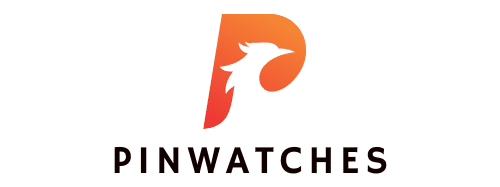How Are Advanced Materials Changing the Future of Sustainable Packaging?

As we dive deeper into the 21st century, we are witnessing the transformative impact of technology on virtually every aspect of our lives. One significant area undergoing a sustainability revolution is packaging. It’s no longer just about wrapping up your goods and shipping them off; it’s about creating a circular economy through advanced materials that are sustainable and environmentally friendly. This begs the question: how are these materials changing the future of sustainable packaging? Let’s unravel the answer.
The Rise of Biodegradable Materials
In the quest for sustainability, one of the most significant shifts has been the move towards biodegradable materials for packaging. These are materials that can decompose naturally, reducing their environmental footprint significantly.
A lire aussi : Tips for creating exceptional customer service with GPT
Sujet a lire : How to use a conversational bot in business ?
Think of everyday items like coffee cups, to-go containers, and produce bags. Traditionally, these have been made of plastic or foam, which do not break down naturally and can contribute to pollution. However, advanced materials are changing this narrative, and biodegradable options are now on the rise.
A découvrir également : What Are the Implications of 5G Technology on Urban IoT Networks?
Biodegradable materials, such as plant-based polymers, are being used to replace traditional petroleum-based plastics. They have similar properties to plastic, offering robustness, flexibility, and water resistance, making them excellent substitutes. They also decompose naturally in the environment, causing less harm.
Avez-vous vu cela : What Are the Implications of 5G Technology on Urban IoT Networks?
Reinventing Recyclable Materials
Recyclable packaging is by no means a new concept. However, advanced materials are setting a new standard for what can be achieved.
Aluminium and glass have long been staples of the recycling world, but they’re not the only players in town anymore. Advanced materials are allowing a wider range of items to be recycled, from complex multi-layer materials to previously unrecyclable plastics.
In particular, the development of new types of paper and cardboard is proving revolutionary. Coated cardboards, for example, combine the recyclability of paper products with the moisture resistance of plastic. This allows food and drink products to be packaged sustainably without compromising on quality.
Reusable Packaging Material Gets A Facelift
Reusable packaging is not a new concept, but it is being redefined by advanced materials. We have seen a significant shift towards reusable packaging—think cloth shopping bags, glass containers, and stainless steel water bottles.
Advanced materials have made it possible to develop reusable packaging that is even more durable, lightweight, and practical than ever before. Materials such as silicon, which is flexible, heat-resistant, and easy to clean, are becoming more common in reusable food storage.
Moreover, many companies are now offering packaging that is designed to be returned, cleaned, and reused, creating a circular economy. These developments are reducing the need for single-use packaging and the waste associated with it.
The Emergence of Edible Packaging
In the search for sustainable packaging solutions, one of the most innovative developments is edible packaging. Yes, you heard it right! Packaging that you can eat, thus eliminating waste completely.
Edible packaging often uses food-based materials, such as seaweed, to create a wrapping that can be consumed along with the product inside. For example, the outer layer of an edible water bottle could be ingested or composted, leaving no trace behind.
While still in its early stages, the edible packaging industry holds enormous promise. It could completely revolutionise the way we package food and drinks, reducing waste and environmental impact dramatically.
Nano-Technology and Smart Packaging
Lastly, let’s not forget about the role of nano-technology in sustainable packaging. Imagine packaging materials that can detect and communicate the freshness of food, extend shelf life, and even self-decompose after use. Sounds like science fiction, right? But with nano-technology, these could soon become realities.
Nano-technology involves manipulating materials at an atomic or molecular scale to achieve specific properties. This technology can create ‘smart’ packaging with unprecedented capabilities. For example, nano-sensors can detect food spoilage and alert consumers, reducing waste.
Sustainable packaging is no longer an option; it’s a necessity. As we continue to grapple with the environmental challenges of our time, the transformation of packaging materials into more sustainable alternatives provides a beacon of hope. From biodegradable and recyclable materials to reusable, edible, and smart packaging, advanced materials are leading the way in shaping a sustainable future. So next time you open a package, take a moment to consider the materials that made it possible. It’s not just about what’s inside the package—it’s also about what’s on the outside.
The Future of Compostable Packaging
We can’t talk about sustainable packaging without mentioning compostable packaging. It’s a step beyond biodegradable packaging, which simply breaks down eventually – compostable materials not only break down but also provide nutrients to the soil in the process.
One revolutionary example of compostable packaging is mycelium-based packaging. Mycelium is the root structure of mushrooms, which can be grown into various shapes and has similar properties to polystyrene foam, making it a great replacement. Unlike foam, however, mycelium packaging is completely compostable and can break down in a home compost pile in just a few weeks.
Another game-changer is packaging made from a mixture of compostable polymers and agricultural waste. These materials can be molded into different shapes and are already being used for products like disposable cutlery and plates. When properly composted, these materials can turn back into soil in under three months.
Compostable packaging is making waves in the industry, and it’s easy to see why. It provides a solution to the waste problem by turning waste back into a valuable resource: soil. This way, packaging can be part of a truly circular economy, where nothing is wasted and everything is part of a continuously renewable cycle.
The Promise of Packaging Made from CO2
Another exciting development in the world of sustainable packaging is the use of carbon dioxide (CO2) as a raw material. This innovative approach could not only reduce our reliance on fossil fuels but also help to mitigate climate change by capturing and utilizing CO2, a potent greenhouse gas.
Researchers are developing ways to convert captured CO2 into a range of materials suitable for packaging. For instance, some companies are already producing plastic-like materials from captured CO2. These materials can be used in the same way as traditional plastics but have a significantly lower carbon footprint.
Additionally, scientists are exploring the potential of converting CO2 into a type of mineral that could replace the use of non-renewable resources in packaging materials. This mineral, called calcite, could be used instead of glass, plastic, or metals in certain packaging applications.
Conclusion
The future of sustainable packaging looks promising thanks to these advanced materials. We’ve gone from a world dominated by polluting, single-use packaging to one where sustainability is at the forefront of packaging design. Biodegradable, recyclable, reusable, edible, compostable, and even packaging made from CO2 are leading the way in transforming the industry.
However, it’s important to remember that sustainable packaging is just one piece of the puzzle. To truly achieve a sustainable future, we must also focus on reducing our overall consumption, reusing what we can, and recycling what we can’t. It will require a collective effort from businesses, consumers, and governments across the world, but with the help of advanced materials, the task becomes a little bit easier.
As we look towards a future of sustainable packaging, let’s embrace these innovative materials and the benefits they bring. Keep in mind that, true to the spirit of sustainability, the goal is not simply to replace old materials with new ones, but to rethink our approach to packaging and move towards a more circular, regenerative system.
